by Chris McClintick
It was the middle of July, and Roger Federer’s voice echoed down the hallway from the Tansill classroom in Trinity College’s Ferris Athletic Center. Six prospective American squash professionals listened intently as the US Squash Academy classroom session led off with a YouTube clip.
The Swiss tennis legend was reflecting on his life and career in a 2012 interview, taped after he replaced Scarlett Johansson as Moet & Chandon’s ambassador. Federer discussed his transformation from a petulant, racquet-smashing young player to the beacon of class and sportsmanship he has been for more than a decade. Asked if he would make his kids play tennis, he said he would leave it up to them. He extolled the life-long values that sports—team and individual, professional and recreational—all teach. As a professional and a public figure, he emphasized the importance of upholding one’s brand and remaining socially aware. One of his keys to excellence and longevity? A support network. His victories were not just his own, but also that of his professional team and his family.
Unlike tennis, professional squash is not glamorous. It doesn’t, yet, earn one global champagne endorsement deals. Nevertheless, squash professionals must manage their bodies and logistics just as meticulously as any other professional athlete. And like all sports, the right support network can make a world of difference. That’s where US Squash’s elite player pathway comes in. In the past four years, US Squash has implemented national team programming unlike any other national governing body in the squash world. Past issues of Squash Magazine have highlighted national junior team programs such as the Elite Athlete Program (begun in 2013), competing in the British Junior Open (2014), a return to the Pan American Juniors (2015), and the Regional Team Championships, and on the senior level, Elite Athlete Program athletes and their success on both the national and international stage.
A key new program, begun last year, is the US Squash Academy. it was designed to be the connective tissue linking elite junior and elite senior programs. Creating a seamless, supportive pathway to the PSA Tour before, during, after or instead of college, the Academy is designed to cultivate the transition from elite juniors through collegiate play and eventually a potential professional career. Spanning age groups as young as U11 players and as old as recent college graduates, the Academy brings together the nation’s top prospects together for two weeks of elite performance training.
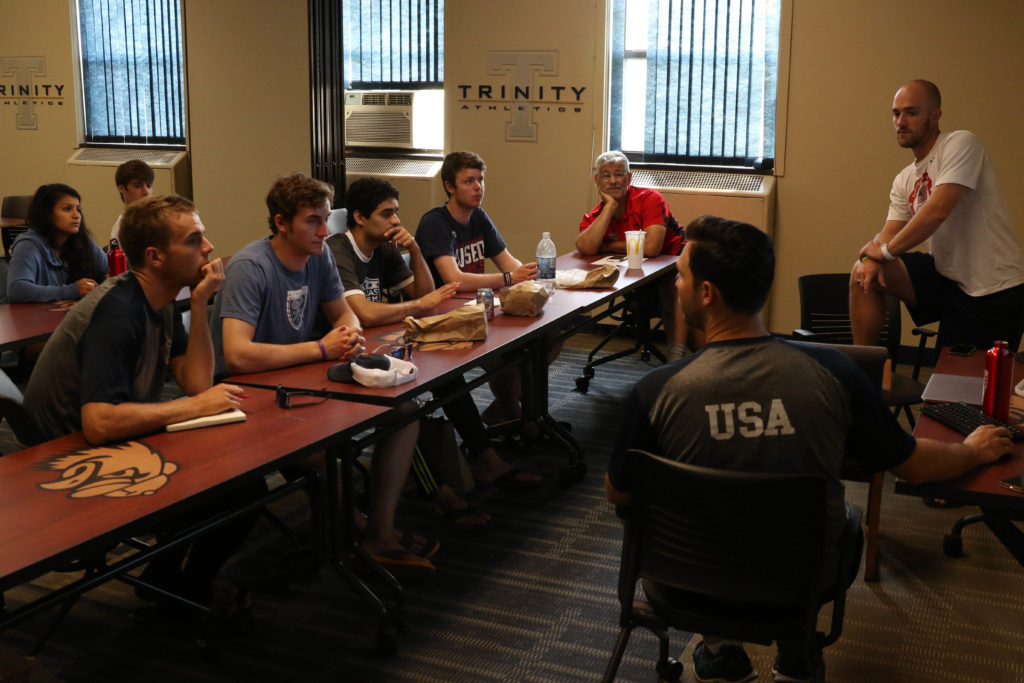
This summer, for the second year, the younger age groups split into two separate, one-week national squad sessions with the U11 and U13 players training together during the first week and the U15 and U17 players during the second. For the U11 through U17 players, the Academy had a camp-style feel to it with boarding in Trinity’s dormitories, and a distraction-free (i.e. parent-free), non-competitive learning environment. The hand-picked group of twenty juniors worked closely with the U.S. national team coaching staff both on court and in the classroom. The staff revealed to them a clear pathway up the national team ladder.
At the same time, the older college and professional prospects trained on adjacent courts and sat in on the junior sessions each day. These players went through a professional-level training regimen on court, coupled with classroom sessions focusing on the pursuit of a professional squash career.
After the Federer clip, Academy Director Gilly Lane, Ganek Family US Squash Head National Coach Paul Assaiante and US Squash Director of National Teams Rich Wade led the classroom session. The Academy spanned two weeks, but this single two-hour classroom session proved to be one of the most fruitful of the fortnight for the aspiring professionals.
The session provided context for building, sustaining and tracking progress on the PSA Tour. Lane, who spent five years on the PSA Tour a decade ago delved through his old training schedule, mapped out down to the minute. Then, a game-changer: Wade explained a tracking system for each prospective EAP athlete which recorded completed PSA tournaments, seeding vs. finishing position, PSA rankings points earned factored by the tournament divisor, PSA earnings, PSA ranking trend and national team activity. The group discussed the strategy behind how you compete on the PSA tour—tournament selection, the benefit of wild cards and how one’s rankings determines the most beneficial tournaments worth entering.
Throughout the session, the players peppered the coaches with questions, scratched their heads and had crucial moments of realization. By the end of the meeting it was abundantly clear that life on the PSA Tour was daunting, but that U.S. touring professionals had a support network ready to help.
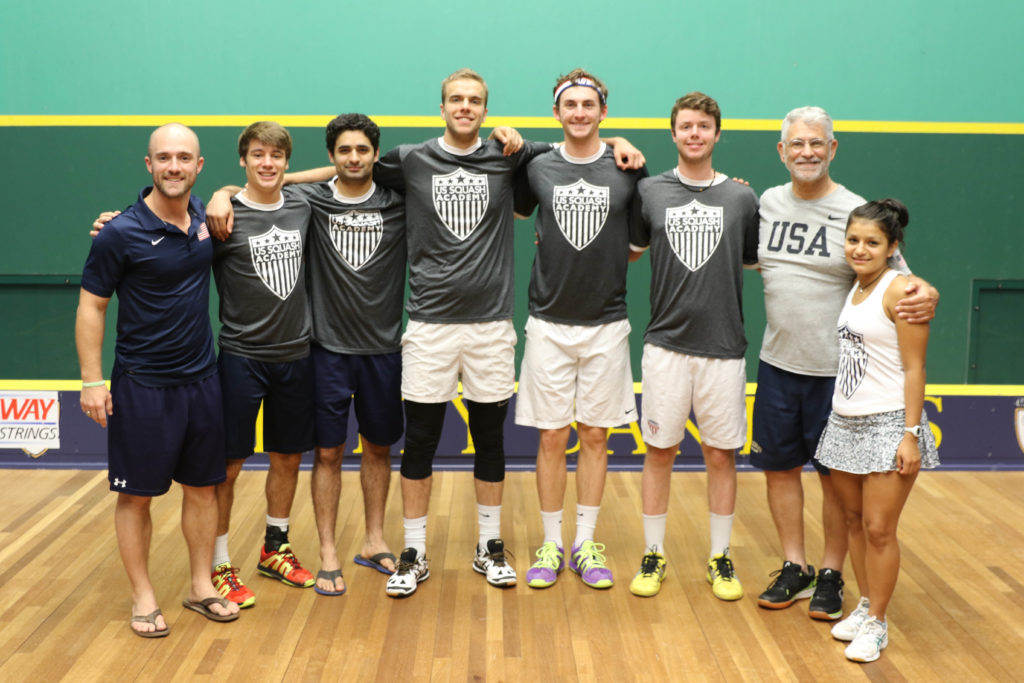
—-
The level of support provided by the Academy and Elite Athlete Program was not available to past U.S. professionals. When Lane became a full-time professional in the summer of 2007 after graduating from Penn, he joined just two other American men on the PSA Tour: Julian Illingworth and Chris Gordon. Lane had three PSA Tour appearances under his belt and a ranking of world No. 225.
“When I first turned pro I thought it was this glamorous lifestyle of being a professional athlete,” Lane said. “I mean, everyone knows that squash players aren’t making the same amount of money that basketball players, football players or baseball players are making, but you think ‘wow I’m a professional athlete. I get to play a sport for a living, which is incredible.’ But there’s a certain professionalism that has to come with that.”
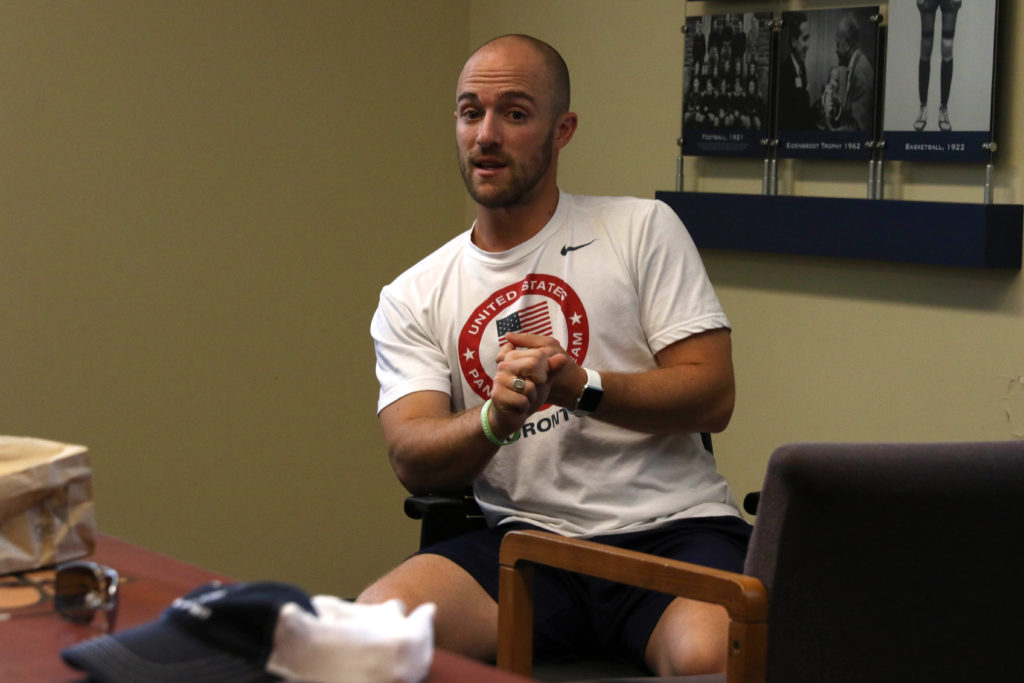
Going into the summer of 2008 after a difficult first year, Lane cracked the top 100 and made Amsterdam his training base. In the Netherlands, with no set plan or location for U.S. players, Lane had to take matters into his own hands. He professionalized his training. He competed in leagues against other touring professionals and trained for six or seven days a week. He hired a manager who helped him build out a seven-week training regimen leading into the 2008-2009 season. Together they mapped out each training session and his nutritional plan, which included alcoholic abstinence.
“Kobe Bryant was always touted as the hardest worker in the gym—he was always the first one there and the last one to leave,” Lane said. “My experiences in Amsterdam were a lot like that—it taught me how to be a true professional. I got the opportunity to learn from two players who were in the top twenty in the world when I moved over there, Cameron Pilley and TK, and they took me under their wing and showed me what it’s like to be a pro, day in and day out. That was taking care of your body and making sure you’re doing all the little things right. That experience helped shape how and what I coach at the academy now. I want to make sure these kids and young pros understand what the day in and day out is, and what it takes to be successful squash professional.”
Four years after turning professional in May of 2010, Lane became the then second-highest ranked U.S. player of all-time on the PSA Tour at world No. 48. A top fifty ranking earned him $5,000 of annual funding from US Squash. In 2011, he returned stateside, shortly after which his playing career was cut short due to injury.
Today, Lane is an integral part the US Squash elite performance infrastructure that didn’t exist in his time as a touring athlete. On a broader scale, outside of the two-week intensive summer elite training sessions, the Academy players are provided a continued support network to remain engaged and organized through working with U.S. National Team personnel—including Lane, Assaiante, Wade and the network of U.S. national team coaches and trainers.
—–
Spencer Lovejoy is the first player to progress through every level of U.S. junior national team programming. This includes regional squads, regional team championships, Battle of the Border, British Junior Open, Pan American Juniors and World Juniors. It has now culminated in the Academy and the goal of becoming a full-time professional upon graduating from Yale in 2020. Now entering his sophomore fall, Lovejoy has made four appearances on the PSA Tour since matriculating.
“The US Squash Academy is the midpoint,” Assaiante said. “It provides guidance to someone like Spencer Lovejoy, who came up through the juniors in the system, representing the U.S. junior national team. On the other end of it Spencer has already made the decision he wants to be a pro. This academy extends to other things that we can do with them through the year—encouraging them to play some PSA events, perhaps giving them a local spot—and they stay in the family and they wear two hats now. In Spencer’s case, he’s wearing the Yale squash hat, but he’s still wearing the Team USA squash hat. This academy is critical to that continued engagement.”
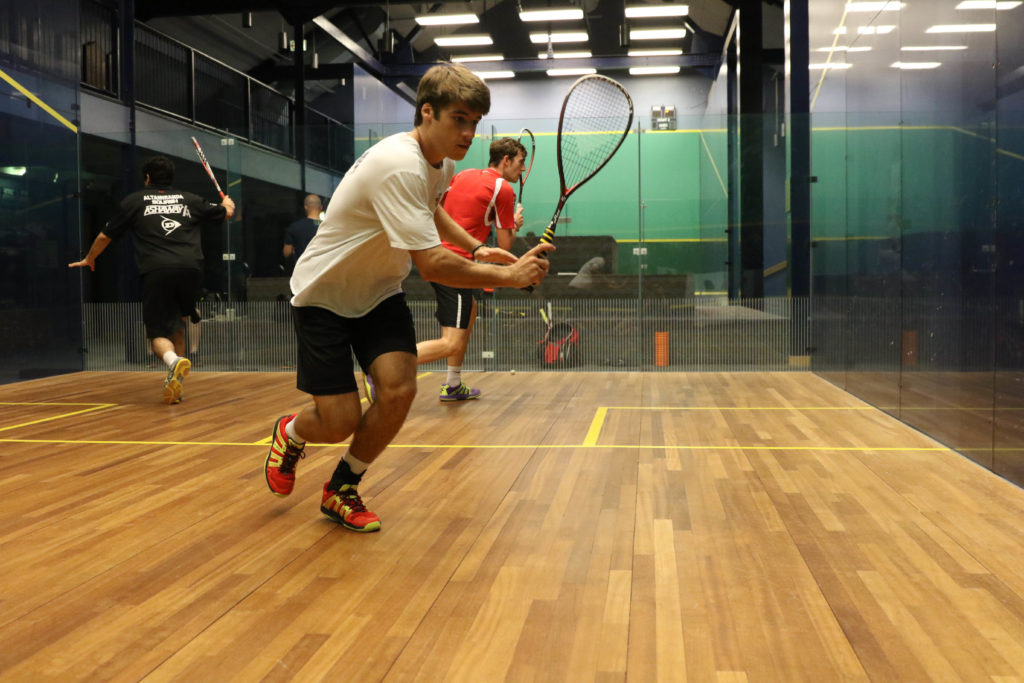
During the Academy classroom session, Lovejoy and 2016 world juniors teammate Timmy Brownell learned that they would both receive local qualifying spots in 2017 U.S. Open presented by Macquarie Investment Management. Lovejoy and Brownell, a rising sophomore at Harvard, are the Academy’s targeted generation at a crucial junction in their squash careers. Fostering professional ambition early in their collegiate careers is a major goal for the Academy.
“It’s interesting, the dominant country in the world right now is Egypt,” Assaiante said. “We want to beat Egypt, but we have to approach it differently because the majority of our players plan to play for college teams. We need to find a way to surpass the Egyptians, while maintaining the U.S. mindset. The Academy, EAP and maintaining communication through the college system is going to make a tremendous difference.”
In addition to working hand in hand with the college system, the Academy aims to harness country’s rising junior participation. U.S. juniors have made waves on the world stage over the past decade, including three consecutive girls’ team second place finishes from 2011-2015 and a record third place boys’ team finish in 2016.
“We’re right on track,” Assaiante said. “Finally, we have players that are not graduating from college and saying ‘hmmm, maybe I’ll give pro squash a try for a little bit and see how it goes.’ This is something that’s been on Spencer and Timmy’s minds for a long time. No other country—in terms of base of pyramid activity—has the amount of activity we now do. Our junior participation numbers are through the roof, so how do we capture that? How do we keep them hungry, keep them focused through the education system, so that on the other end they graduate with a degree from a great school and ready to play squash for a decade or more? Then they can go back and use that degree to build the next chapter of their lives. In the meantime, they put us on the podium.”
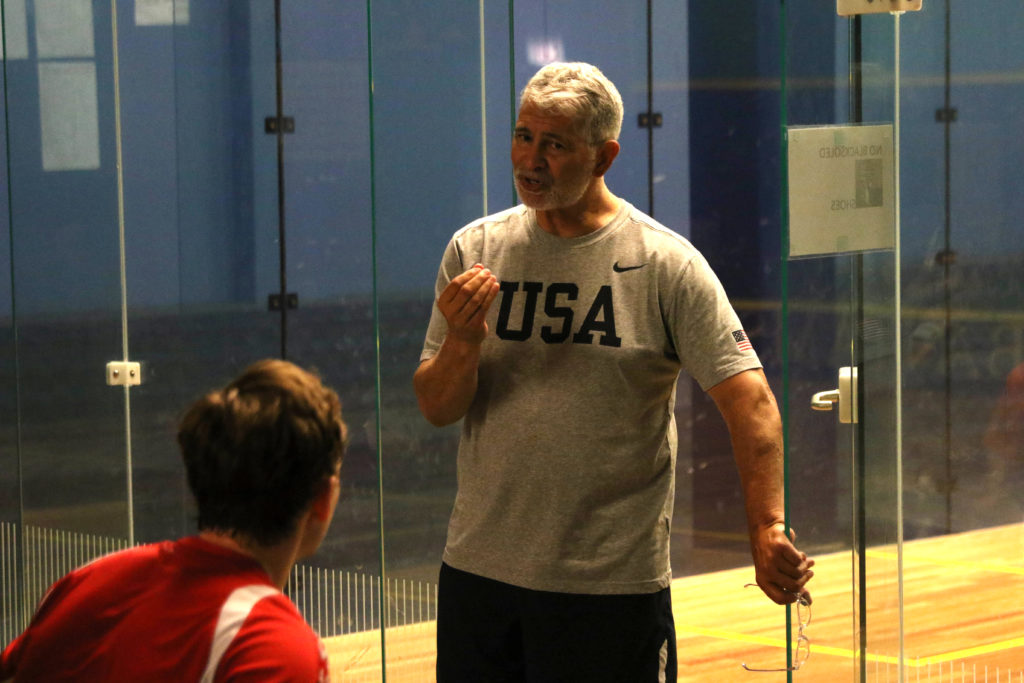
For Lovejoy—a member of the U.S. boys’ team that shocked France in the world junior team quarterfinals last summer—professional ambition is rooted in his early success on the U.S. junior circuit.
“I’ve actually dreamed of becoming a professional squash player ever since I won my first JCT back in the U13s,” Lovejoy said. “I’ve always loved the sport and I started moving up the junior rankings in the U13s, solidifying a spot in the top four of my age group. Even though I was this young, I thought it would be the greatest thing to be able to play squash for a living. My coach, Lynn Leong, also inspired me a lot when I was a junior. She always put 100% into our sessions and wanted me to improve every time we got on court. I remember asking her if she thought I could make it as a pro and she told me I could. That gave me a lot of belief when I was young.”
With his first year of collegiate squash under his belt and facing a Yale academic workload, Lovejoy is beginning to incorporate lessons and methods he picked up from the Academy into his sophomore year. The Branford, CT-native admitted balancing a collegiate and professional squash schedule while pursuing an Ivy League degree isn’t easy—something Amanda Sobhy and Illingworth can attest to.
“It was tough for me to balance squash and college at first because of the academic schedule,” Lovejoy said. “It took me a while to adjust to the team schedule as well as well as the lifting we were doing, which was quite heavy. I think that this year will be an even better squash-wise because of my grasp for the college schedule, and I am going to make more of an effort when it comes to organization of my training. The Academy—as well as my desire to turn pro—have affected my training outside of the college season. I have begun to have an even more detailed idea of how to structure my training and how to plan my tournaments. I am currently trying to play tournaments before the season starts as well as during the summer so that I can have a good ranking coming out of college and really hit the ground running on tour. This was one Idea the Academy stressed for us and I think it is very important.”
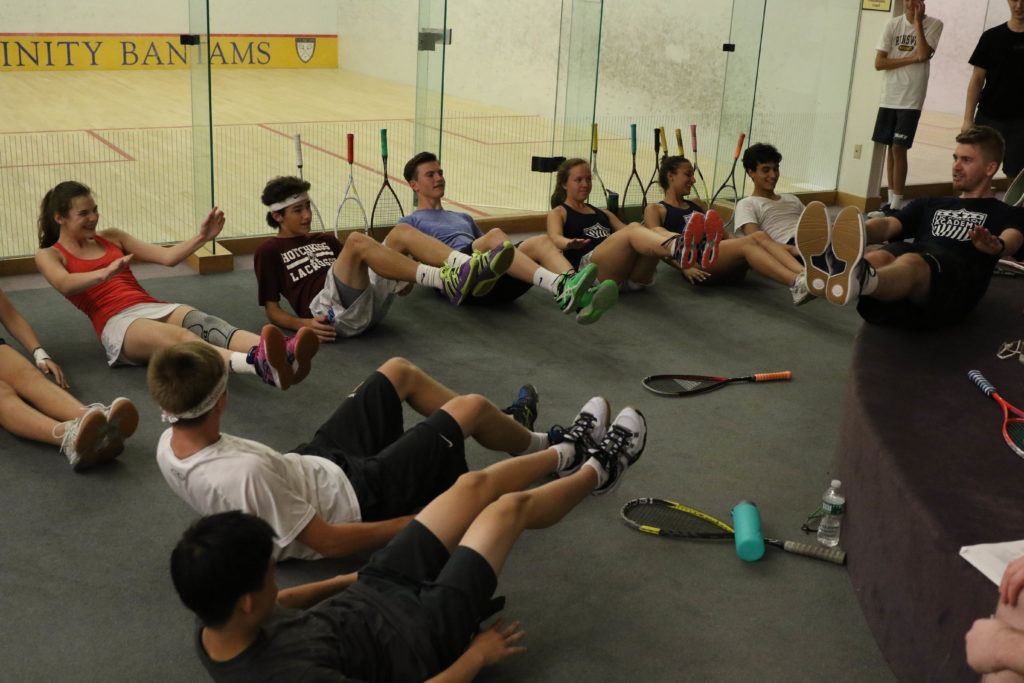
There is the ideal model demonstrated by Sobhy, who dominated the college game, while also extending her reach and success on the PSA Tour. The bar she set is a high one, having graduated in 2015 with a top ten ranking in the world and four Ramsay Cups—the college individual title—in her trophy cabinet. But even at the lower levels, a PSA ranking can dictate a lot. The difference between graduating college as world No. 200 or world No. 100 is a drastic one. It can mean the difference between playing two qualifying matches to reach a main draw or starting fresh in the first round of a main draw thanks to a higher ranking. It can often take a year or more for a player just joining the PSA Tour to accrue an advantageous ranking when it comes to draw placement. PSA rankings also determine the various tiers of Elite Athlete Program funding. Compared to $5,000 a decade ago, the EAP directly invests as much as $40,000 in a player. Lane believes the emphasis on building a PSA ranking before graduation is one of the most vital lessons of the US Squash Academy.
“There are two concepts that are difficult to grasp for college players pursing a professional career: one, how tough it is, and two, that it takes time.” Lane said. “It takes a lot longer than a year to really establish yourself—it is a big learning curve. You may not just be playing big time tournaments, but also smaller ones. You have to take care of your body on a daily basis, and make sure you have the right training and nutrition. I think one of the hardest things is getting though that first year because there are probably more downs than ups. You have to learn from that, take it in stride and hope to mature and grow. What the Academy is doing is actually preparing our players earlier than when Julian, Chris and I were prepared. It’s unbelievable learning and time well spent for these kids.”
—-
The Academy design of the older and younger players training separately, yet side by side, was deliberate. The older players set the example and the work ethic and positive, constructive mindset trickled down the courts. Every player and coach—regardless of age—wear the same three letters on the back their shirts, and understand the significance comes along with that. Many of the juniors have already represented Team USA in international competition at the Battle of the Border or British Junior Open. In other cases, the Academy was the first call up in to the national team pipeline after a breakout season.
“It’s obviously motivating seeing the older players train,” said Myles McIntyre, a fifteen-year-old from Boston who represented the U.S. at the British Junior Open. “They’ve been in my shoes as junior players, done really well in the past and worked their way up the ladder. Knowing that I could be there one day is a goal of mine. It’s a tool for improvement to watch them, take little tips and talk with them off court here. That’s really important.”
Last year, McIntyre and his coach Thierry Lincou set the short-term goal of making the U.S. World Juniors team and the long-term goal of one day turning professional. Like McIntyre, thirteen-year-old Natasha TK aims to represent the U.S. on the world stage.
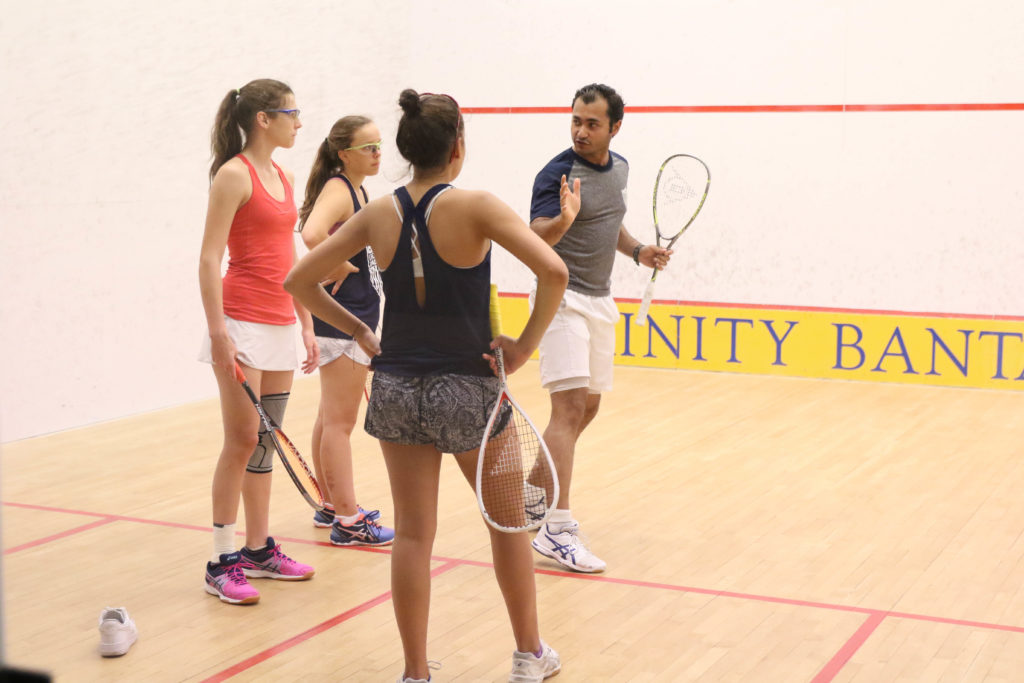
“I’ve played in the Canadian Junior Open and the U.S. Junior Open, but I’m hoping to reach a more international level,” TK said. “It’s a goal of mine to be on the world juniors squad. I also know that squash made it into the Junior Olympics, and that would be absolutely amazing if one day I would be able to compete in that.”
The Academy is shifting the culture of U.S. junior squash at its roots. The Academy instills belief in young athletes that they can progress through the age groups as elite players, put junior Team USA on the podium, and follow with a successful college and professional career.
The first two editions of the US Squash Academy have been two weeks, but the program has the potential to grow. “I 100% don’t think there’s any question that the US Squash Academy will expand in the future,” Assaiante said. “I’m not even going to limit what is possible by a lack of imagination on my part. The program is there, and now you let it grow. It could be phenomenal—it will be phenomenal.”





